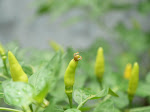Last July 16 I wrote a blog that solving overfishing will effectively reduce poverty within the fisheries sector. I enumerated six key solutions. Two of them is investing in science capacity and find a better governance framework that will solve the fragmented management of our fishing grounds.
Three years later came FAO 263 creating the Fisheries Management Areas (FMA). The entire fishing ground was subdivided into 12 major areas using ecological rather than political boundaries, identifying the zoogeographies of most important commercial species. The policy institutionalizes and mainstream science in the policy development and opens up flexibility in the creation of appropriate governance structure that stakeholders will agree on.
FMA is to manage large sections of our fisheries waters and is the same large scale conservation areas like the ecoregions (WWF) and large marine ecosystems (LME) of FAO for biodiversity conservation. FMA looks at the ecological boundaries of major species and the human dimension of stakeholders dependent on these fisheries resources;- thus in full agreement to the EAFM principles that the Bureau of Fisheries and Aquatic Resources (BFAR) advocates.
But, like any new innovative approach, it will be disruptive. It could open new opportunities to improve the fragmented management of fishing grounds, provide efficiency in administrative side like registration and licensing, improve flow of information from the local to national, review and improve policies among many others.
But it could also disrupt those that benefit from the current system of inefficiency.
The disruption it will cause many stakeholders to comment and criticize. This is expected and all criticisms should be heard.
My advice is to give the FMA its chance to be developed and be tested in different areas with different characteristics. I look at it in a very positive way: a way to finally rid of things that don't work: commercial for BFAR versus municipal for LGUs, passive versus active gears, with our without 10,1-15 km distance, etc.
All we need is to open our minds, participate in the discussions, argue with science support and
chill out. The solutions may be forthcoming.
Three years later came FAO 263 creating the Fisheries Management Areas (FMA). The entire fishing ground was subdivided into 12 major areas using ecological rather than political boundaries, identifying the zoogeographies of most important commercial species. The policy institutionalizes and mainstream science in the policy development and opens up flexibility in the creation of appropriate governance structure that stakeholders will agree on.
FMA is to manage large sections of our fisheries waters and is the same large scale conservation areas like the ecoregions (WWF) and large marine ecosystems (LME) of FAO for biodiversity conservation. FMA looks at the ecological boundaries of major species and the human dimension of stakeholders dependent on these fisheries resources;- thus in full agreement to the EAFM principles that the Bureau of Fisheries and Aquatic Resources (BFAR) advocates.
But, like any new innovative approach, it will be disruptive. It could open new opportunities to improve the fragmented management of fishing grounds, provide efficiency in administrative side like registration and licensing, improve flow of information from the local to national, review and improve policies among many others.
But it could also disrupt those that benefit from the current system of inefficiency.
The disruption it will cause many stakeholders to comment and criticize. This is expected and all criticisms should be heard.
My advice is to give the FMA its chance to be developed and be tested in different areas with different characteristics. I look at it in a very positive way: a way to finally rid of things that don't work: commercial for BFAR versus municipal for LGUs, passive versus active gears, with our without 10,1-15 km distance, etc.
All we need is to open our minds, participate in the discussions, argue with science support and
chill out. The solutions may be forthcoming.
